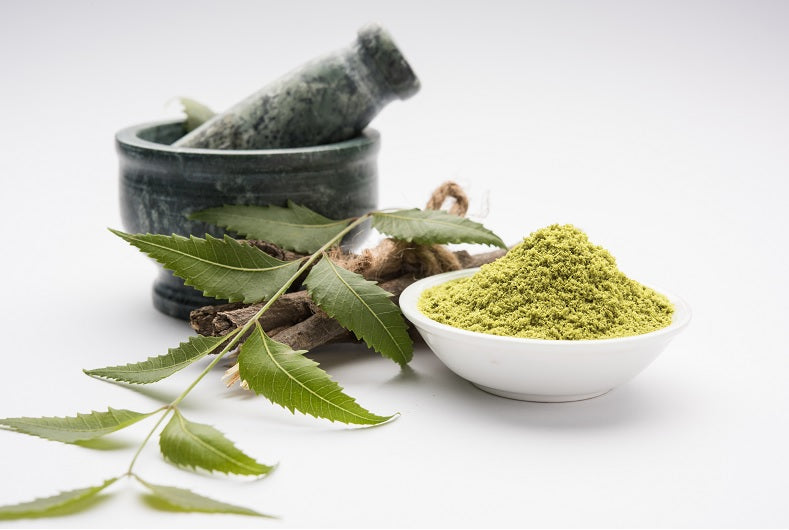
Organic Cow Ghee vs Regular Ghee: Which One Truly Nourishes You?
21 Oct, 2025Introduction In Ayurveda, ghee (Ghrita) is more than a cooking fat; it’s a therapeutic elixir th...
Read more
In Ayurveda, ghee (Ghrita) is more than a cooking fat; it’s a therapeutic elixir that nourishes the body, mind, and spirit.
For centuries, it has held a sacred place in Indian households, used in rituals, healing, and daily meals.
However, not all ghee is created equal. With the rise of organic cow ghee, made from organically fed cows without hormones or chemicals, health-conscious individuals are rediscovering its Ayurvedic power.
So, what truly sets organic cow ghee apart from regular commercial ghee? Let’s explore the Ayurvedic, nutritional, and ethical differences.
Organic cow ghee is prepared from the milk of cows raised on organic farms, where they are fed natural, pesticide-free fodder and treated with care and respect.
The process involves:
Setting boiled milk into curd using a natural culture (jaaman)
Churning the curd to separate butter (makkhan) from buttermilk
Slowly heating the butter to yield golden, aromatic ghee
This gentle process preserves essential nutrients like omega-3 fatty acids, vitamins, and enzymes, making the ghee light, digestible, and tridosha-balancing.
When cows are organically raised and the ghee is made without preservatives or chemicals, it becomes a truly Ayurvedic superfood that supports digestion, immunity, and vitality.
Read the complete Guide to Organic Cow Ghee–>
Regular or commercial ghee is typically made from the milk of non-organic or hybrid cows such as Jersey or Holstein.
Their milk may contain residues from chemical feed or hormones, and the ghee is often made through industrial high-heat processing.
Regular ghee is commonly:
Made from cream or malai, not curd (non-cultured method)
Processed in bulk with high heat and machinery
May contain preservatives or additives to enhance shelf life
As a result, regular ghee often loses its enzymes, aroma, and sattvic (pure) essence, making it less nourishing and more of a neutral fat source.
|
Feature |
Organic Cow Ghee |
Regular Ghee |
|
Source |
Organically fed Indian cow milk |
Non-organic or hybrid cow milk |
|
Milk Protein Type |
Naturally digestible, free from synthetic residues |
May contain hormone or antibiotic traces |
|
Method |
Traditional curd-churned, slow heating |
Cream-based, machine-processed |
|
Feed & Environment |
Organic, chemical-free, natural grazing |
Non-organic feed, commercial dairy setup |
|
Ayurvedic Quality |
Sattvic, tridosha-balancing |
Heavier may aggravate Kapha |
|
Digestibility |
Light and easy to digest |
Denser and harder to digest |
|
Nutrient Retention |
High in CLA, Omega-3, Vitamins A, D, E, K |
Nutrients are often degraded under heat |
|
Taste & Aroma |
Rich, nutty, and naturally aromatic |
Neutral or processed flavor |
|
Therapeutic Use |
Ideal for Ayurvedic diet and rituals |
Mostly used for cooking only |
|
Energy & Ojas |
Builds Ojas (vital essence), enhances Agni |
Less effective in nourishing Ojas |
Ayurveda calls Organic cow ghee “tridoshahara.” It balances all three doshas (Vata, Pitta, Kapha) when consumed mindfully.
Organic cow ghee kindles Agni (digestive fire) and supports nutrient absorption.
It also removes Ama (toxins), keeping metabolism efficient and balanced.
Regular consumption builds Ojas, the essence of vitality, immunity, and emotional stability.
Acts as a natural brain tonic, improving focus, memory, and calmness.
Lubricates tissues, relieves dryness, and promotes radiant, soft skin.
Rich in antioxidants and fat-soluble vitamins, it boosts immune strength and supports graceful aging.
|
Nutrient (per tbsp ~14g) |
Organic Cow Ghee |
Regular Ghee |
|
Calories |
~120 kcal |
~120 kcal |
|
Fat |
13–14 g (healthy fats) |
13–14 g |
|
Saturated Fat |
8–9 g |
9–10 g |
|
Omega-3 Fatty Acids |
Present |
Minimal |
|
Conjugated Linoleic Acid (CLA) |
Rich |
Trace |
|
Butyric Acid |
High (gut-healing) |
Low |
|
Vitamins A, D, E, K |
Naturally abundant |
Reduced by high-heat processing |
|
Protein |
Trace |
Trace |
While both are sources of good fats, organic cow ghee retains more bioactive compounds and fat-soluble vitamins that contribute to its Ayurvedic and nutritional superiority.
Ayurveda describes cow ghee as “sattvic,” pure, calm, and life-enhancing. Regular ghee, especially from non-organic or hybrid cows, is considered heavier (guru) and less sattvic in nature.
Organic cow ghee:
Enhances Agni (digestive fire) without aggravating Pitta
Cleanses micro-channels (srotas shodhana) and removes toxins
Nourishes brain tissue, eyes, skin, and joints
Acts as Yogavahi, carrying the benefits of herbs deeper into tissues
Strengthens Ojas, the root of immunity and longevity
Ancient Ayurvedic texts like the Charaka Samhita praise ghee as “the best among all fats.” When derived from pure, well-nourished cows, it becomes a medicine as well as food.
While both Organic Cow and regular ghee provide healthy fats, organic cow ghee is superior in purity, nutrition, and spiritual value. It is light, sattvic, and rich in nourishing compounds that enhance digestion, immunity, and overall wellness.
Regular ghee may serve basic culinary needs, but Maharishi Ayurveda Organic Cow Ghee is a complete Ayurvedic nourishment, a golden elixir for mind, body, and soul.
Choose consciously. Eat mindfully. Live sattvically.
Organic cow ghee is clarified butter made from organically raised cows’ milk. It’s free from pesticides, hormones, and preservatives, offering pure, nutrient-rich, sattvic fat ideal for Ayurvedic wellness.
Yes. Organic ghee is almost lactose- and casein-free because milk solids are removed during preparation. It’s generally safe for people with mild lactose intolerance when consumed moderately.
Absolutely. Organic ghee has a high smoke point and stable fats, making it perfect for daily cooking. It enhances flavor, aids digestion, and supports overall health when used mindfully.
No. Ghee is pure clarified fat, so it contains negligible protein or carbohydrates. It’s rich in healthy fats and fat-soluble vitamins like A, D, E, and K.
Properly stored organic ghee lasts 9–12 months without refrigeration. Keep it in an airtight jar away from moisture and sunlight to preserve its aroma, purity, and freshness.
No. Organic cow ghee contains zero sugar or carbohydrates. It doesn’t raise blood glucose levels and, when used moderately, even helps stabilize metabolism and support healthy digestion.
The best organic cow ghee comes from cows fed natural, chemical-free fodder and raised humanely. Maharishi Ayurveda Organic Cow Ghee ensures purity, sattvic quality, and authentic Ayurvedic nourishment.
Introduction In Ayurveda, ghee (Ghrita) is more than a cooking fat; it’s a therapeutic elixir th...
Read more Guide to Immunity
Guide to Immunity
 Featured Articles
Featured Articles

Are you struggling with your oral health because of your eating habits? Are toothaches becoming your new normal because you have not been brushing well? Is eating ice cream a big NO, as you have brushed a little too much? A lot of you have been made to believe that your oral issues emanate from what you are doing wrong or not doing the right thing. What if we tell you that you have been approaching this all wrong and trying to solve the problems topically instead of addressing the root cause? Do you ever think about the real reason for these significant dental issues?
Ayurveda helps you focus on the fundamentals and identify the root cause. It is the science of treating the underlying imbalances and correcting the cause in a completely natural and effective way. Among its numerous health benefits, when it comes to oral health, Ayurvedic Toothpaste is a game-changer for preserving strong and healthy teeth. A natural and effective alternative to the chemical-laden equivalents and a beneficial synergy of herbs that help in holistic dental care. Surprising, right!? Well, read on to turn your surprise into a new belief!


नित्यमध्मान तां तांस्तु व्याधिभिश्च विवर्जितः।
रसैश्च दन्तमूलानां रूक्षैराचाम्य विक्रियाम्॥
Meaning: Regularly cleaning your mouth makes your teeth and gums healthy and prevents diseases.
The Charaka Samhita mentions the importance of oral care in overall health. This is more than just information from ancient scriptures; much research has validated the role of a healthy mouth in a healthy body. A 2022 study in Frontiers of Microbiology highlighted this critical link: an imbalance in the oral microbiome causes periodontal disease and promotes cardiovascular disease development.
Wondering how? Saliva is the first fluid that is secreted during digestion. It lubricates the tongue and oral cavity and ensures that the whole digestive tract stays lubricated, along with the chewed food passed down to the stomach. It carries all microbes into your gut and is the most crucial link between oral and overall health
Saliva also contains some antimicrobial proteins and enzymes that keep harmful microorganisms from growing while ensuring the good ones thrive. However, any saliva production or composition imbalance can affect the oral microbiota. This could be due to poor oral hygiene, an unhealthy diet, or systemic health issues.
This imbalance can have dire consequences for oral health, such as dental caries, gum issues, and infections. Moreover, balanced saliva helps lubricate and break down food for easy digestion and ensures that teeth get essential minerals to maintain and repair themselves.

Dantadhaawan is an ancient Ayurvedic oral hygiene practice that involves using herbal twigs, AKA ‘‘Datoon’’, to clean teeth and gums. Commonly used twigs include those from the neem, babool, and liquorice plants. These twigs have antimicrobial properties that help maintain oral hygiene.
According to the Shadrasa (six tastes) in Ayurveda, every herb has a Rasa (dominant taste) that determines its properties and actions.
An ideal toothpaste must contain Katu, Tikta, Kashaya, and Madhura Rasa, each of which positively impacts maintaining the health of our oral cavity.
Let’s uncover the properties of these essential Rasas to know more:
|
Rasa |
Action |
|
Katu (Pungent) |
It deeply cleanses the oral cavity |
|
Tikta (Bitter) |
Antibacterial & antiseptic action |
|
Kashaya (Astringent) |
Provides pain relief |
|
Madhura (Sweet) |
Strengthens the gums & teeth |
You see, an Ayurvedic toothpaste not only cleanses your teeth but also gives Bala (strength) through the properties of the natural Dravyas (herbs) used in it.

It may sound complex, but formulating toothpaste at home is as easy as making a face pack! All you need is 10 grams of dry leaves or powders of neem, mulethi, jamun, and amalaki. Grind or mix them, and your dry toothpaste powder is ready! During every brushing session (preferably morning and evening), mix it with your *Dosha-appropriate adjuvants. Vata *Dosha* can mix sesame oil, Pitta *Dosha* can mix ghee, and Kapha *Dosha* can mix honey/mustard oil, and your quick, healthy toothpaste is ready!
If you’re a busy bee, not interested in DIYs, or find it difficult to source these ingredients, don’t worry! We have Maharishi Ayurveda Ayurdent Toothpaste. It is your one-stop solution to all your oral problems. It’s a unique formulation that works on your saliva and is suitable for all body types, irrespective of the Doshic predominance.
It contains neem for cleansing, triphala for balancing, and meswak & ginger for stimulating saliva. Ayurdent promotes holistic oral health naturally and provides protection from major oral problems like cavities, plaque, bleeding gums, toothache, sensitivity, and bad breath. It contains the goodness of 20 Ayurvedic ingredients and is free from SLS and fluoride. Certified by COSMOS Natural, it stands out for its authenticity compared to other Ayurvedic and herbal toothpaste. This innovative, non-foaming formula is a must-try in the category.
 Recent Blogs
Recent Blogs


As per Ayurveda, no two individuals are alike. Maharishi Ayurveda offers personalised treatment for each individual at all touch-points. Consult our expert Vaidyas to get root cause-based personalised treatment from the comfort of your home
CONSULT VAIDYA